How Much Cost to Install a Solar Panel System in 2025

How Much Does It Cost to Install a Solar Panel System?
Solar energy is becoming increasingly popular. Many homeowners are considering solar panels for their energy needs. Installing a solar panel system can save you money and help reduce your carbon footprint. However, one of the most common questions is, “How much cost to install a solar panel system?” In this article, we will explore that question in detail.
The Basics of Solar Panel Installation
Before we dive into costs, let’s understand what solar panels are and how they work. Solar panels capture sunlight and convert it into electricity. This process is called photovoltaic (PV) technology.
A solar panel system typically consists of the following components:
- Solar Panels: They capture sunlight.
- Inverter: Converts DC electricity from panels to AC electricity for home use.
- Mounting System: Holds the panels on your roof or ground.
- Battery System (optional): Stores energy for use when sunlight is not available.
- Wiring and Installation Tools: Essential for connecting everything.
Factors Affecting the Cost of Solar Panel Installation
The price of installing a solar panel system can vary widely. Many factors influence the overall cost. Here are some key considerations:
1. System Size
The size of your solar panel system is one of the most significant factors. Systems are typically measured in kilowatts (kW). A larger system generates more electricity, but it also costs more.
2. Types of Solar Panels
There are several types of solar panels you can choose from, including:
- Monocrystalline Panels: More efficient and take up less space, but they cost more.
- Polycrystalline Panels: Less efficient and larger, but they are cheaper.
- Thin-Film Panels: Flexible and lightweight but less efficient than the other types.
Choosing the right type will impact both performance and price.
3. Installation Costs
Installation costs can vary depending on your location and the complexity of the installation. For example, installing panels on a steep roof may require more labor and equipment.
4. Local Regulations and Permits
Different states and municipalities have their own regulations. Some areas may require permits that can be added to the overall cost. It is essential to check these before installation.
5. Incentives and Rebates
Many states offer incentives, tax credits, and rebates for solar panel installation. These can significantly lower your upfront costs. Research what is available in your area.
6. Financing Options
You can purchase solar panels outright, lease them, or use a power purchase agreement (PPA). Each option has its own cost structure and benefits. Financing options can reduce the initial financial burden.
Average Costs of Installing Solar Panels
Now that we’ve discussed the factors influencing costs, let’s look at the average cost range for solar panel installations.
1. National Averages
As of late 2023, the average cost of solar panel installation in the United States is approximately $15,000 to $25,000 for a typical home. This is for a system size around 6 kW to 10 kW.
2. Cost Per Watt
A common way to express solar costs is per watt. The average cost of solar panel installation is around $3 to $5 per watt. For a 6-kW system (6,000 watts), you could expect a cost range of $18,000 to $30,000.
3. Breakdown of Costs
A typical breakdown of costs might look like this:
- Solar Panels: 30% to 40%
- Inverter: 10% to 20%
- Labor installation: 15% to 25%
- Mounting Equipment: 5% to 10%
- Permits and Fees: 5% to 10%
- Miscellaneous Costs: 5% to 10%
4. Regional Variations
Costs can vary significantly by region. For example, states with high solar adoption rates like California and New York might have higher upfront costs but more rebates. On the other hand, states with less sunlight may offer lower prices but also generate less electricity from solar panels.
Savings, Payback Period, and ROI
While the initial costs can scare some people away, it’s crucial to consider long-term savings. Here’s how to evaluate your investment:
1. Energy Savings
Solar panels reduce your monthly electricity bill. Depending on your system size, you could save anywhere from $50 to $300 monthly. Over time, these savings can add up.
2. Payback Period
The average payback period for solar panels is around **6 to 10 years**. This means that after this period, your energy savings will start to outweigh your initial investment.
3. Return on Investment (ROI)
ROI can be calculated by comparing your savings to your installation cost. A well-implemented solar panel system can provide an ROI of **10% to 20%** over its 25–30-year lifespan.
Choosing the Right Installer
Choosing the best installer is crucial. Here are some tips on how to find the right one:
1. Research Local Installers
Look for solar installers in your area. Check their reviews, ratings, and certifications. Websites like SolarHomeIdeas.com can help facilitate this process.
2. Get Multiple Quotes
It’s always wise to get multiple quotes. Compare the pricing, warranties, and the systems they offer. This will help ensure you get the best deal.
3. Check for Licenses and Insurance
Ensure that your chosen installer has the necessary licenses and insurance. This will protect you in case of any issues during installation.
4. Ask About Financing Options
Your installer should offer various financing options. Check to see if they work with local banks or credit unions that offer favorable solar loans.
Maintenance and Long-Term Costs
Once you install solar panels, it’s essential to consider maintenance and long-term costs.
1. Maintenance Requirements
Solar panels are relatively low maintenance. They generally require cleaning and inspection. Cleaning is essential to remove dirt or debris that may block sunlight, and it usually costs about $100 to $300 per cleaning.
2. Inverter Replacement
Inverters typically need replacement for between 5 to 15 years. This can cost around $1,000 to $3,000. Plan for this expense.
3. Longevity
Most solar panels come with warranties that last 25 years. However, they can continue to function for over 30 years. This long lifespan makes solar panels a solid investment.
Environmental Impact
Switching to solar power is beneficial for the environment. Here’s how:
1. Reduced Carbon Footprint
Solar energy greatly reduces your reliance on fossil fuels. This transition helps cut down greenhouse gas emissions.
2. Sustainable Energy Source
Solar energy is renewable and sustainable. It relies on the sun, which is abundant and free. Investing in solar panels helps advance sustainable energy goals.
3. Local Job Creation
The solar industry creates jobs. Many installers, manufacturers, and support staff contribute to the local economy. This job creation helps families and communities thrive.
Conclusion
Installing a solar panel system can be a significant investment, but it is often worthwhile in the long run. As we discussed, costs can vary based on numerous factors, including system size, types of solar panels, and local regulations.
Before making your decision, consider your energy needs, budget, and potential savings. Research local installers thoroughly, and ensure you choose one that fits your requirements.
In the end, switching to solar energy is an investment in both your future and the planet’s future. By going solar, you can enjoy lower energy bills and contribute to a cleaner environment. Make the change today and let the sun help power your home!





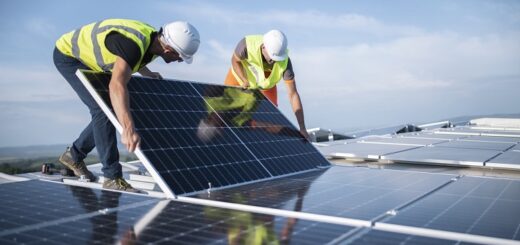
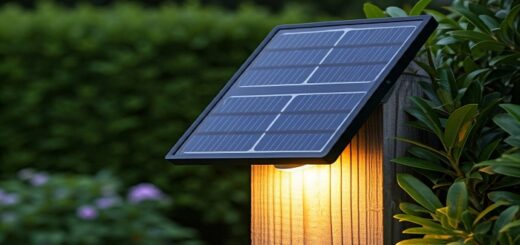


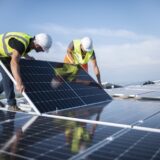
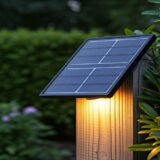



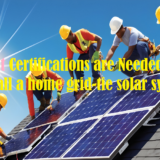



1 Response
[…] Step-by-Step Guide to Solar System Installation […]